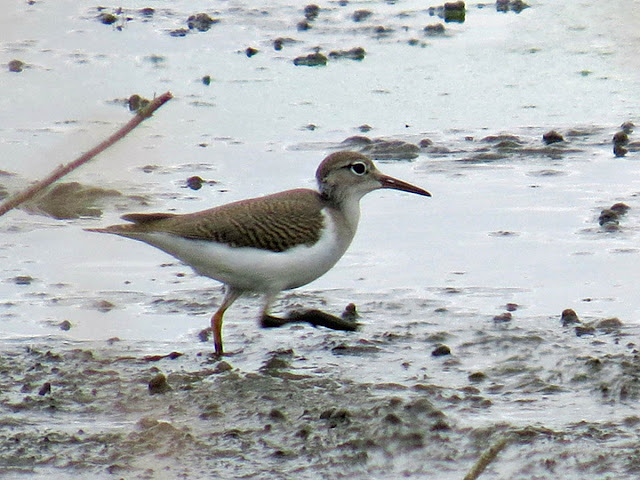Well, yes; that is true. I know, fall shorebird identification is complex.
As a volunteer eBird reviewer I want to make sure birds reported into eBird in my local area are correct. Too many incorrect reports can really corrupt the data. Without this volunteer "cleaning" of the data, eventually every bird would be reported from every location. It becomes harder to find errors when birders are misidentifying birds that do occur in small numbers.
As reviewer I try to make these requests for more details a non-confrontational educational experience. [Oh-oh, the "E" word that my children used to dread!] It is my desire to create better birders submitting more accurate and complete lists of birds. When I go birding far away from home, it is not unusual for me to receive such "are you sure?" requests from other local reviewers asking about unusual species I may have reported. So don't take it personally.
For instance, when I see checklists with reports of Solitary Sandpipers (which do occur in small numbers in fall), but no reports of the abundant breeding Spotted Sandpiper, I ask the observer for more details for confirmation. [You can look up eBird fall reports of Solitary Sandpipers in your own county and check for this possible ID error yourself.]
Both Solitary Sandpipers and juvenile Spotted Sandpipers are medium small shorebirds with yellowish legs, a white eyering, and rather plain brown upper breasts. They are smaller than Lesser Yellowlegs, but barely so. Yellowlegs have a pale eyebrow stripe and longer, bright yellow legs.
Compare the following two photos taken at Fernhill Wetlands in Forest Grove, Oregon. Then we'll discuss them below. Initially they look much the same. Can you find 4 significant differences?
 |
| Don't let it fool you! This is a juvenile Spotted Sandpiper. Photo August 2, 2013 by Sandi Morey. |
 | |
| Solitary Sandpiper. Photo April 24, 2005 by Greg Gillson. |
OK, here they are.
1. Habitat. Empty mudflats on top, emergent weeds on the bottom. Yes, habitat is a key field mark for Solitary Sandpiper. Farm ponds, grassy edges. In contrast, the Spotted Sandpiper likes it a bit more open and often rocky--including rocky stream edges and lake shores.
2. Back and wing coverts. Both have brown upper parts. However, did you see the wavy black lines on the juvenile Spotted Sandpiper? What about the Solitary Sandpiper? It is lightly speckled with little white or pale cinnamon (western population juveniles) dots.
3. Breast. The upper breasts of both birds are rather smooth brown. However, the Solitary Sandpiper shows some streaking on lower breast.
4. Bill. The bill on Spotted Sandpiper is rather thick, especially compared to the needle thin bill of Solitary Sandpiper.
I hope this helps. The next time you record Solitary Sandpiper on your eBird list, go ahead and describe the habitat, wing coverts, breast, and bill in the comments section. Then anyone looking at your list will know that you didn't make this tricky identification error!